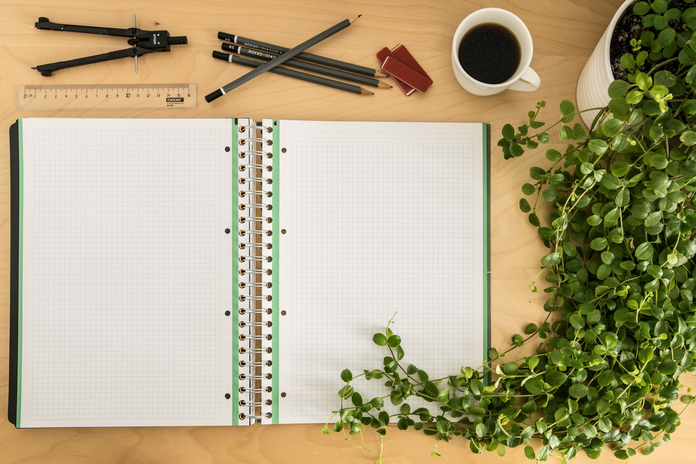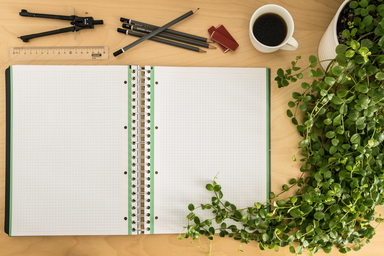As someone who is both easily distracted and slightly disorganized, I have had to come up with a lot of different ways to make schoolwork and studying easier to do. Here are some little tricks that I have found really useful for those of you that might be struggling with distraction and disorganization too!
1. Color-coded note taking
Note taking is really an art that takes time to master. One technique that works really well for many students is creating color-coded notes. Try writing out your notes with a multicolor pen or multiple colored pens. Then, assign meaning to each color. These meanings can range from being separate topics within a page of notes or even just as separators for main ideas from minor ones. One example of this is creating headings in one color and then using a different color for sub-points. Then, a third color becomes sub-points of the original points, and so on, so forth.
This technique is especially helpful if you’re a visual learner. Being able to separate main ideas from minor ones with colors is a great way to make your notes more dynamic and organized, perhaps even easier to read!
2. One planner for due dates, one planner for “do” dates
This technique is really great for making sure you stay organized and on top of your work. Most college students seem to either bite off more than they can chew work-wise, or they do absolutely nothing productive for hours at a time. To work on the essential skill of time management, try getting a separate planner or notebook for lists of what assignments you want to accomplish for the day. Make sure to have smaller goals instead of just having big picture goals. A great way to do this is to separate your larger assignments into smaller checklists. For example, if you’ve got a 30-page reading due in three days, try splitting the reading up into 10-page increments and assigning what time you want to get each one done by.
Something else to try (if you really want to go all out) is placing your due dates in a separate planner when possible. Online and digital planners seem to work really well for due-date-oriented planners. It’s important to experiment with both digital and handwritten planners for the due-dates and do-dates. Something to keep in mind is that studies have shown that handwritten notes tend to be easier to remember than typed ones.
3. Take advantage of websites and apps for productivity
There are tons of applications and websites that can be super helpful for productivity, and there are more and more out there every year!
For visual learners, try using kanbanflow.com. This website provides a great “task board” for cracking down during midterms and finals or simply when you’ve got a lot on your plate. The website has a built-in timer, too, so you can check how much time you’re spending on each assignment. In addition, there is a great Apple-only app called iProcrastinate that lets you enter in tasks and due dates with maximum customization. For students looking for a powerful app and website combination, there’s also mystudylife.com. This site creates opportunities for you to enter in your class schedule, as well as create lists of tasks and assignments. There’s also a separate section for exams if you’re looking for more detail-oriented organization.
It’s important to know that there are plenty more apps and websites for students out there. Try doing a simple Google search for “apps for students” or “websites for students.” Both can give you a ton of options!
4. Clean out your folder(s) periodically
You might just have a folder or two that you store loose papers in, as many students do. Try setting aside time every two weeks (or even every month) to go through the folder or folders as you look for papers you no longer need. This will save you so much stress when you’re looking for useful papers in the future. It’s great to look through all of your bags for loose paper, too. This will keep you organized and will make you more aware of what papers are in which places.
5. Test out different background noises and music for studying
Studying in silence isn’t for everyone, so don’t assume it’s the right thing for you! There are many options for study music and background noises to take advantage of.
For songs, try listening to music without words. This seems to work best for many students, since the lack of words minimizes ways to be distracted. A great way to access wordless music is through the Spotify app. It has many libraries of popular song instrumentals and movie soundtracks, two of the many genres of “songs without words.” You can also try out Pandora.com for an instant “radio station” and go to their stations for instrumental music.
If you don’t like listening to music, try listening to background noises. For a coffee-shop-type sounds, go to coffitivity.com. This website creates a fake sense of quiet, slight noise and movement around you. Noisli.com has a wider range of sound effects such as a crackling fire or ocean waves. You can even create your own “soundscapes” at relaxing-ambient-mixer.com, which has hundreds of sounds you can mix together.
Even just trying one of these techniques can drastically improve your organizational skills. It’s important to keep experimenting with different studying and homework tactics. Keep doing so until you find one that really brings out the best student in you!


